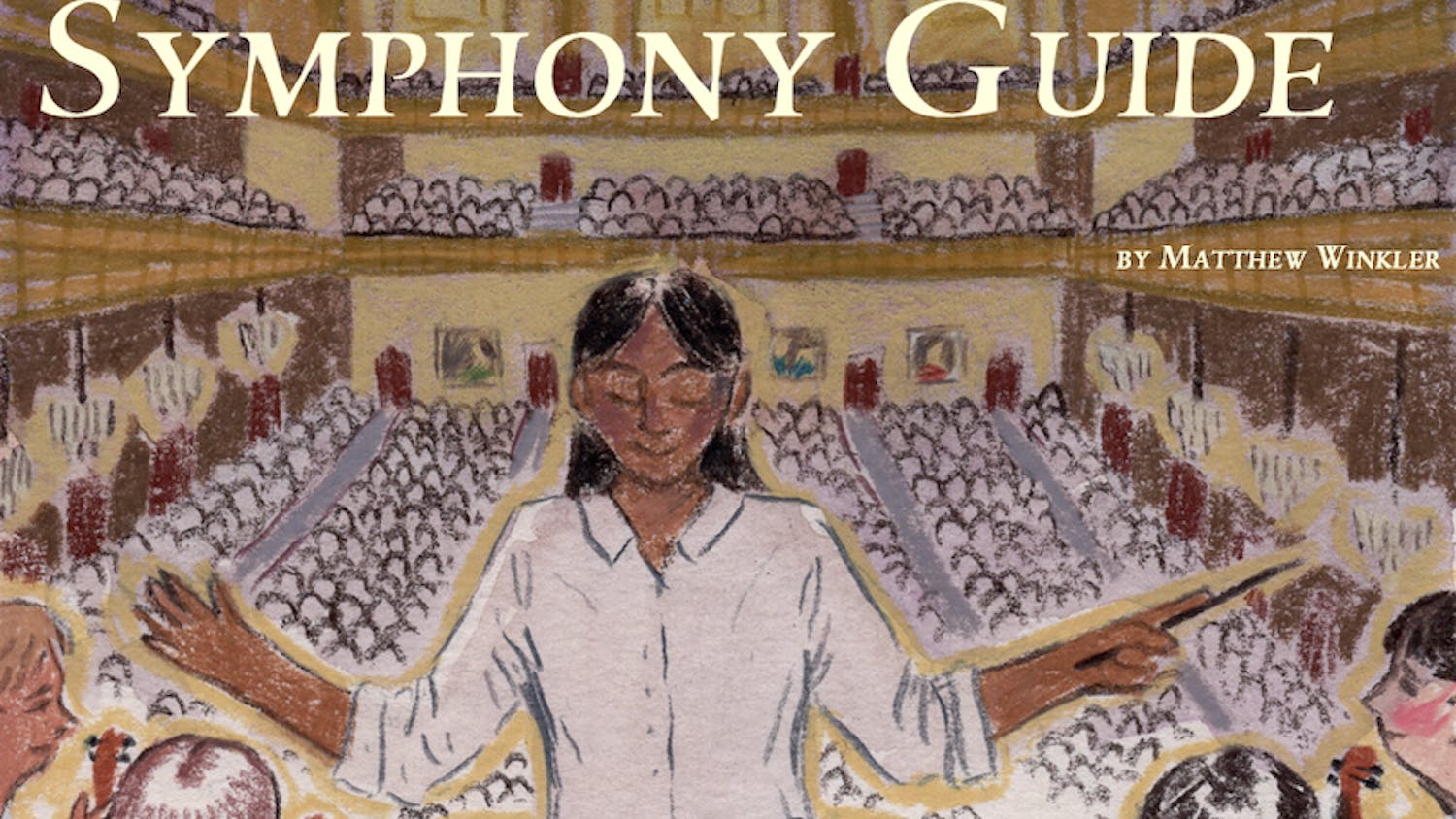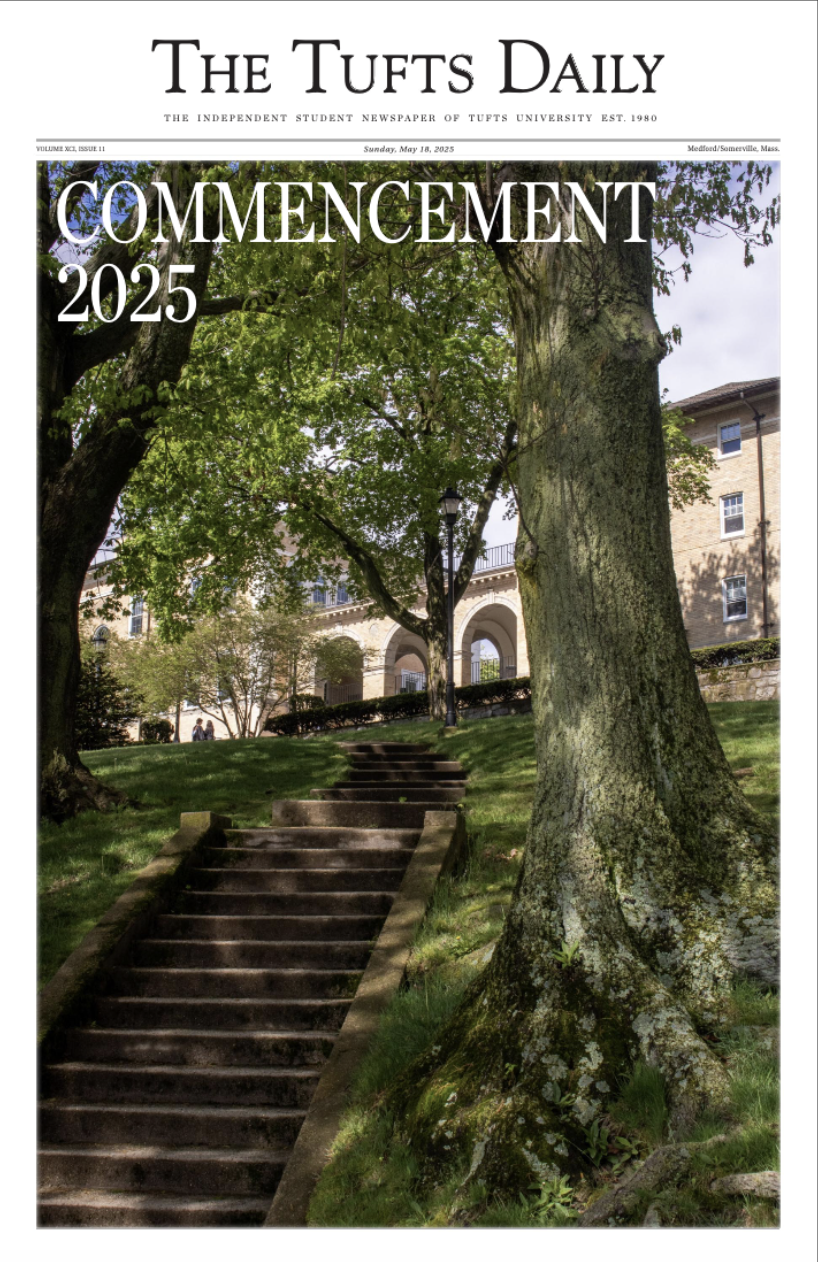Intellectual curiosity permeated Ballou Hall's Coolidge Room on Friday afternoon as undergraduate students presented their research to students, faculty and family.
The session was part of the Eighth Annual Undergraduate Research and Scholarship Symposium, an event that celebrates research completed by Tufts undergraduates.
The symposium kicked off with a lunch and opening talk by Biology Professor Barry Trimmer. Two sets of 15-minute student presentations, a poster session and a dinner reception followed.
Thirty-seven students gave oral presentations on topics within the sciences, humanities and social sciences. Presentations were held simultaneously in three rooms in Braker Hall.
Presentation topics ranged from sophomore Maia Leppo's "Nitric Oxide Acts as Natural Inhibitor of Metamorphosis in the Snail Crepidula Fornicata" to senior Arielle Aaaronson's "Masculinities Among Male Distance Runners" to senior Stephen Johanson's "Allied Interdiction Bombing Efforts over Europe, 1944-1945."
Eighty students, including those who made oral presentations, presented their research at the poster session in Ballou Hall. Students stood by their posters during the one-and-a-half hour session, summarizing their research for interested parties and answering questions.
The symposium has traditionally been held on a Saturday, but the organizers decided to hold it on a Friday this year to encourage a stronger turnout.
"The [scheduling] change made a huge difference," said Cailin Joyce, a senior and the head student organizer of the event.
Bridget Perrin, a senior who presented at the poster session, worked at the Tufts New England Medical Center, where she conducted qualitative interviews with children who have attention deficit and hyperactivity disorder (ADHD), as well as their parents.
Perrin is a biology major, but the research she conducted as a summer scholar dealt primarily with psychology. Her goal was to understand how both children and parents experience the stigma surrounding the disease and to learn whether they blame the stigma on the disease itself or on outside factors, such as teachers.
Steven Fusillo, another senior who presented at the poster session, is in his third semester of research in the Tufts Biomimetic Devices Lab, which Trimmer heads.
Fusillo said that he experienced initial difficulties in finding a research opportunity. He sent e-mails to every member of the biology and psychology departments, but less than half of the people he contacted responded, and most of the responses were negative.
Still, Fusillo is content with his current research situation.
"It takes patience and motivation, but in the end any result is rewarding," he said.
Fusillo studied the organizational pattern of muscle contraction in the Manduca sexta caterpillar. The findings of his research may help to more precisely define the role of muscle in locomotion.
Trimmer's talk was titled "Body and Mind: Animals and Robots in a Complex World." He used a PowerPoint presentation full of graphics and video clips to discuss locomotion in animals and his laboratory's work.
Trimmer said his lab was investigating a "radical hypothesis" and that the "complex biomechanisms of squishies [soft-bodied animals] can simplify the neural component [of movement]."
The highlight of the talk occurred about midway through, when Trimmer passed two of the caterpillars used by the lab around the audience, whose members laughed as they tried to ply the caterpillars and their "Velcro feet" off of their hands.
In the spirit of the symposium, Trimmer acknowledged the undergraduates who have worked in his lab at the end of his talk.
Other organizers of the symposium included senior Jess Keiser, senior Ali MacDonald and sophomore Oleg Svet. Associate Biology Professor Colin Orians was the faculty advisor for the event, and Coordinator of Scholarship and Enrichment Programs in the Office of the Dean of Undergraduate Education Kate Nash also helped to organize the program.





